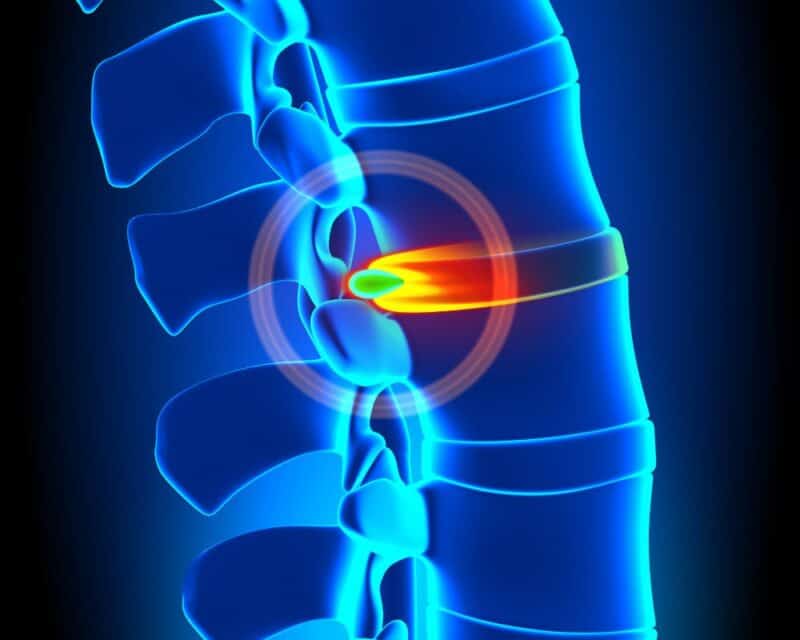If you suffer from shooting back pain, radiating leg weakness, or a constant tingling sensation, you may have a herniated disc. Thankfully, a herniated disc doesn’t have to mean a life of pain and limitations. A physical therapy clinic and an individual physical therapist can offer individualized programs to help treat the symptoms and limitations caused by a herniated disc. Depending on the severity of your condition, PT can provide a non-invasive and effective way to treat herniated discs.
Symptoms of a Herniated Disc

The signs and symptoms of a herniated disc hinge on its severity and location. The most common issues include pain, weakness or numbness, and tingling sensations. Depending on the location of the herniation, the pain can radiate into and around your lower back, buttocks, legs, neck, shoulders, and arms. The type of pain may consist of sharp and shooting pains that are dull or constant. Pain can worsen with specific movements, like bending, twisting, coughing, or sneezing.
Weakness or numbness can occur because the herniation compresses the nerves. Muscle weakness can affect limbs, making everyday tasks like walking or picking things up challenging. Numbness can also affect mobility because it usually involves the feet or hands.
Tingling is also described as a feeling of pins and needles. It is the result of the nerve compression around the herniation.
Exploring the Potential of Physical Therapy Treatments
Physical therapy near me has several advantages that correspond with the focus of the practice. For instance, there are five reasons to opt for physical therapy when you have a herniated disc.
- Pain reduction: PT aims to reduce pain through the building of muscles and devotion to flexibility. Your therapist can help decompress nerves, reduce inflammation, and improve blood flow to the affected area through guided and structured exercises.
- Range of motion: Therapy also focuses on improving range of motion with stretches and manipulations. The primary objective for patients with a herniated disc is to promote spinal mobility and reduce stiffness.
- Increased strength: Exercises likely center around core strength to stabilize the spine, reducing the burden on damaged discs.
- Recurrence prevention: Beyond increasing strength and range of motion, PT aims to reduce the likelihood of repeat injuries. A physical therapist may teach a client about proper body mechanics, lifting techniques, and posture adjustment to reduce spinal stress and strain.
- Surgery alternative: PT can eliminate the need for surgery or postpone it. It acts as a first-line treatment and defense against invasive options.
Types of Physical Therapy Treatments for Herniated Discs

When attending physical therapy Durham, NC, for a herniated disc, a therapist may recommend and use several treatments. For example, manual therapy, strengthening exercises, posture training, and other modalities may be suggested.
The McKenzie Method, or the Mechanical Diagnosis and Therapy technique, is a common approach to treating herniated discs. This approach emphasizes patient empowerment but still requires a professional assessment.
The McKenzie Method focuses on identifying specific, directional triggers or movements that help centralize your pain. For example, it reduces the pain felt in the legs and arms and moves it closer to the spine.
A herniated disc is a painful issue, but it doesn’t always need corrective surgery. You can try physical therapy first. Contact a local physical therapist to schedule an assessment.
